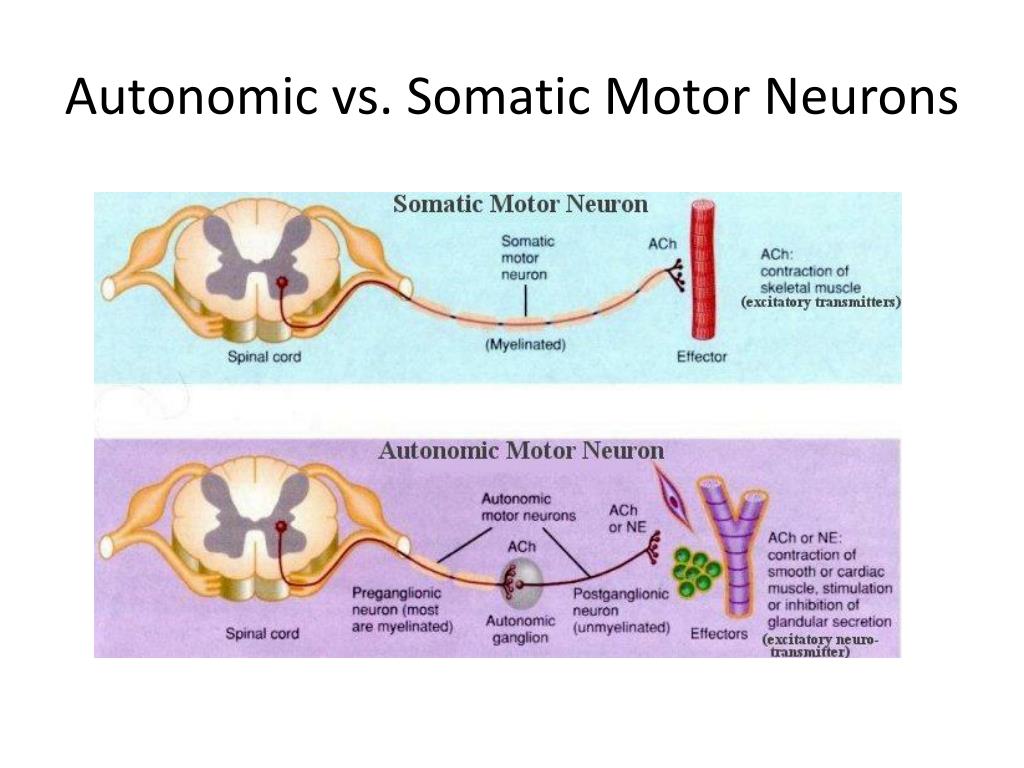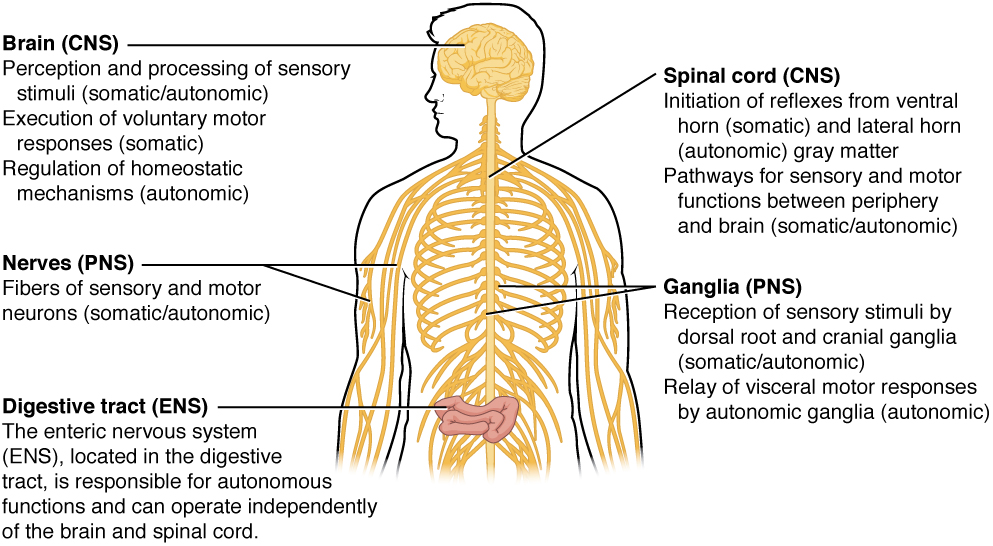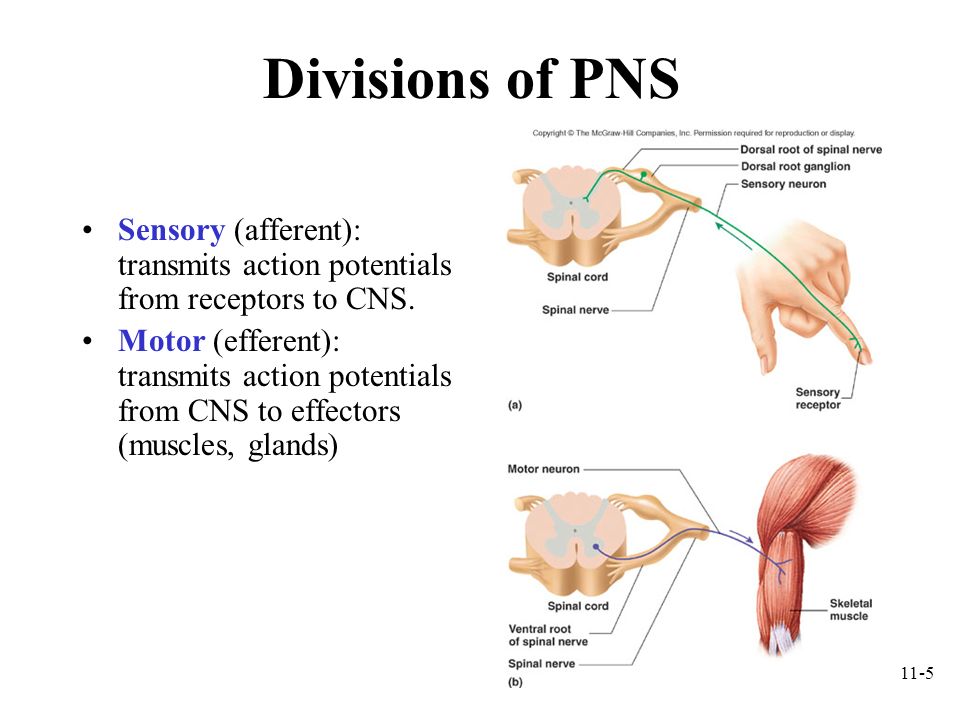

Ach is also released by some sympathetic postsynaptic neurons and all parasympathetic postsynaptic neurons. All presynaptic neurons use Ach as a neurotransmitter.

The most common are norepinephrine (NE) and acetylcholine (Ach). The autonomic nervous system releases chemical messengers to influence its target organs.

The following effects are seen as a result of activation of adrenergic receptors:
#Effector organs of the somatic nervous system are series
sympathetic neurons of the CNS (spinal cord) interact with peripheral sympathetic neurons through a series of sympathetic nerve cells bodies known as ganglia.sympathetic neurons are generally considered to belong to the peripheral nervous system, although some of the sympathetic neurons are located in the CNS (central nervous system).Sympathetic nervous system (SNS) - the SNS triggers what is commonly known as the "fight or flight" response: The ANS is divided into two subsystems, the SNS (the sympathetic nervous system) and the PNS (parasympathetic nervous system). The ANS is always "on" and functioning unconsciously, so we are unaware of the important tasks it is performing every waking (and sleeping) minute of every day. The ANS helps to maintain homeostasis (internal stability and balance) through the coordination of various activities such as hormone secretion, circulation, respiration, digestion and excretion. The role of the ANS is to constantly fine-tune the functioning of organs and organ systems according to both internal and external stimuli. ANS neurons are responsible for regulating the secretions of certain glands (i.e., salivary glands) and the regulation of heart rate and peristalsis (contraction of smooth muscle in the digestive tract), among other functions

It consists of autonomic neurons that conduct impulses from the central nervous system (brain and/or spinal cord) to glands, smooth muscle and cardiac muscle. The Autonomic Nervous System (ANS) is the involuntary division of the nervous system. For example, we are not aware when our blood vessels change size, and we are (usually) unaware when our hearts speed up or slow down. We are usually quite unaware of the functioning of our autonomic system because it functions in a reflexive and involuntary manner. The autonomic nervous system is part of the peripheral nervous system and controls the function of many muscles, glands and organs within the body. The organs of our body (viscera), such as the heart, intestines and stomach, are regulated by a branch of the nervous system known as the autonomic nervous system.


 0 kommentar(er)
0 kommentar(er)
